#Center for Computer Research in Music and Acoustics
Explore tagged Tumblr posts
Text
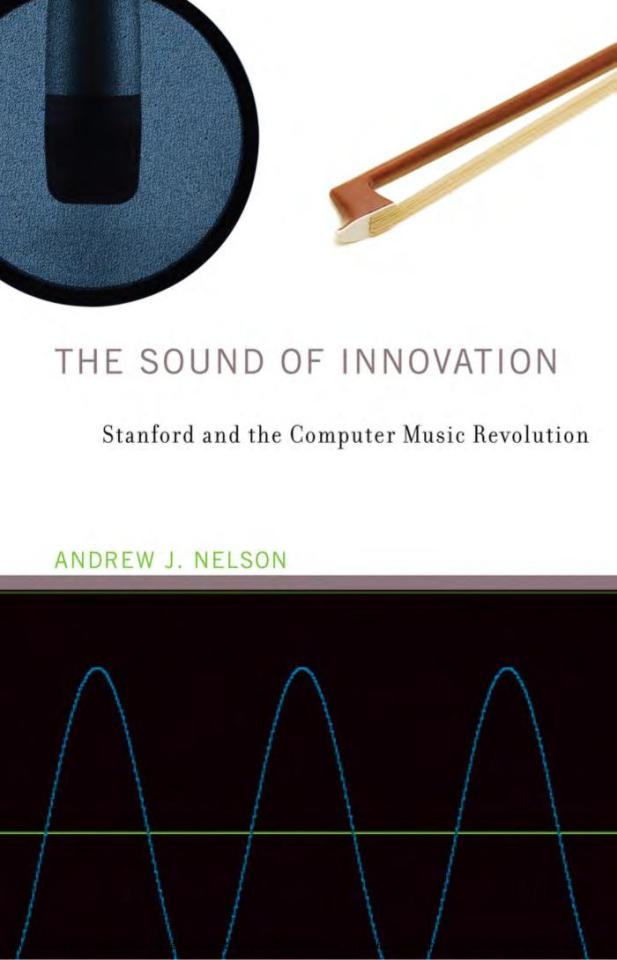
How a team of musicians, engineers, computer scientists, and psychologists developed computer music as an academic field and ushered in the era of digital music.
In the 1960s, a team of Stanford musicians, engineers, computer scientists, and psychologists used computing in an entirely novel way: to produce and manipulate sound and create the sonic basis of new musical compositions. This group of interdisciplinary researchers at the nascent Center for Computer Research in Music and Acoustics (CCRMA, pronounced “karma”) helped to develop computer music as an academic field, invent the technologies that underlie it, and usher in the age of digital music. In The Sound of Innovation, Andrew Nelson chronicles the history of CCRMA, tracing its origins in Stanford's Artificial Intelligence Laboratory through its present-day influence on Silicon Valley and digital music groups worldwide.
The Sound of Innovation: Stanford and the Computer Music Revolution : Nelson, Andrew J. : Free Download, Borrow, and Streaming : Internet Archive
5 notes
·
View notes
Text
Archaeoacoustics: The Archaeology of Sound

Archaeoacoustics, a burgeoning field within archaeology, combines the study of ancient sites and artifacts with the science of sound. By examining how sound was used and experienced in historical contexts, researchers can gain unique insights into the lives, cultures, and environments of ancient peoples. This post will delve into the principles of archaeoacoustics, its methodologies, significant findings, and the implications of these discoveries for our understanding of history.
What is Archaeoacoustics?
Archaeoacoustics is the interdisciplinary study that merges archaeology, acoustics, and sometimes anthropology, to understand the role of sound in past human activities. This field investigates how ancient peoples produced, manipulated, and perceived sound, whether in rituals, communication, or daily life. By reconstructing these soundscapes, archaeoacoustics offers a sensory dimension to historical inquiry, enriching our interpretation of archaeological sites and artifacts.
Methodologies in Archaeoacoustics
Acoustic Measurements and Simulations
One of the primary methods in archaeoacoustics involves acoustic measurements and simulations. Researchers use modern technology to analyze the acoustics of ancient structures such as theaters, temples, and caves. Tools like sound level meters, directional microphones, and computer simulations help in understanding how sound behaves in these environments. By measuring reverberation times, frequency responses, and sound distribution, archaeologists can infer the acoustic properties and possible uses of these spaces.
Sound Mapping
Sound mapping is another critical technique, where the distribution of sound within a particular area is documented. This involves creating detailed maps that illustrate how sound travels and is experienced at different locations within a site. These maps can reveal areas of optimal acoustics that may have been used for specific activities, such as speech, music, or ritual practices.
Experimental Archaeology
Experimental archaeology also plays a role in archaeoacoustics. By recreating ancient instruments or sound-producing devices, researchers can explore how these tools might have been used and what kind of sounds they produced. This hands-on approach provides tangible insights into the auditory experiences of ancient peoples.
Significant Discoveries in Archaeoacoustics
The Acoustics of Stonehenge
One of the most fascinating studies in archaeoacoustics involves Stonehenge, the prehistoric monument in England. Researchers have used acoustic modeling to understand how sound would have behaved within this stone circle. Findings suggest that the stones could have amplified speech and musical sounds, creating an immersive auditory experience. This has led to speculation that Stonehenge may have been used for rituals or gatherings where sound played a crucial role.
The Hypogeum of Hal-Saflieni
The Hypogeum of Hal-Saflieni in Malta, an underground temple complex, is another site of interest. Acoustic studies have shown that certain chambers within the Hypogeum have unique resonance frequencies that enhance the human voice. This has led researchers to believe that the temple may have been designed with acoustic properties in mind, possibly for chanting or other vocal rituals.
Chavin de Huantar
At the ancient site of Chavin de Huantar in Peru, archaeoacoustics has revealed that the temple complex was built with sophisticated sound manipulation in mind. Researchers discovered that the architecture of the site, including its network of tunnels and chambers, could have been used to create disorienting and awe-inspiring auditory effects during religious ceremonies. The use of conch shell trumpets and other sound devices would have added to these effects, enhancing the spiritual and psychological impact on participants.
The Maya Pyramid of Kukulkan
At the Maya ceremonial center of Chichen Itza in Mexico, an incredible acoustic phenomenon can be heard at the Pyramid of Kukulkan. If you clap your hands directly in front of the pyramid's main staircase, it echoes back an almost mechanical bird-like chirping sound. Handclaps from different positions along the base of the staircase likewise trigger the echo, but with different musical tones spanning half an octave. Recordings of the hand-clap echoes match the chirp of the nearly extinct Quetzal, the sacred bird associated with both the name of the pyramid and its plumed serpent deity Kukulkan.
The Maya Ruins of Palenque
Archaeologists discovered that the temples and public squares in Palenque, Mexico could clearly project the sounds of a human speaker and musical instruments of the time across at least a hundred meters, or about the length of a football field. The investigation identified rooms that could have been used by musicians, speakers or priests to amplify the frequency, quality and volume of sound, allowing the music or the message to travel further and reach more people. The findings strongly suggest the design and structures at Palenque involved a great deal of knowledge about acoustics and the behavior of sound.
Implications and Insights
Understanding Rituals and Ceremonies
Archaeoacoustics provides valuable insights into the rituals and ceremonies of ancient cultures. By reconstructing the soundscapes of these events, researchers can better understand the sensory experiences of participants and the role of sound in these practices. This can shed light on the spiritual and cultural significance of sound in ancient societies.
Reinterpreting Archaeological Sites
The study of sound can lead to new interpretations of archaeological sites. Structures that were previously thought to serve purely functional purposes may be re-evaluated in light of their acoustic properties. For example, a room that was assumed to be a storage area might be reconsidered as a space for ritual chanting if it has unique acoustic characteristics.
Enhancing Public Engagement
Archaeoacoustics also has the potential to enhance public engagement with archaeology. By recreating the sounds of the past, museums and heritage sites can offer immersive experiences that bring history to life. This sensory approach can make historical sites more accessible and engaging for visitors, fostering a deeper connection with the past.
Conclusion
Archaeoacoustics offers a fascinating and innovative approach to the study of ancient cultures. By exploring the acoustic properties of archaeological sites and artifacts, researchers can uncover new dimensions of historical experience and gain deeper insights into the lives of ancient peoples. Despite its challenges, the field holds great promise for enhancing our understanding of the past and engaging the public with history in new and exciting ways. As technology advances and interdisciplinary collaboration continues, the future of archaeoacoustics looks both promising and intriguing, inviting us to listen to the echoes of history in ever more profound ways.
#consciousness#archaeology#acoustics#ancient cultures#sound waves#anthropology#music#ritual#sacred places
43 notes
·
View notes
Text
School with Best Infrastructure in Bhopal: A Blueprint for 21st Century Learning
Introduction
In today’s competitive educational environment, infrastructure plays a vital role in shaping a student’s overall learning experience. Beyond textbooks and exams, the learning environment impacts creativity, motivation, comfort, and mental well-being. A school with best infrastructure is not just a building—it’s a space where young minds evolve with access to modern resources, innovative learning tools, and a secure atmosphere. Bhopal, a city known for its educational aspirations, hosts several institutions that reflect architectural excellence and futuristic amenities.

This article highlights the elements that define superior school infrastructure and how such schools are redefining education in the city. We also examine how modern facilities contribute to being among the top 10 CBSE schools in Bhopal, serving as a benchmark for others.
The Role of Infrastructure in School Excellence
Modern-day schooling is about preparing students for global challenges. While quality teaching remains crucial, the surroundings in which students learn can either enhance or hinder that quality. A well-designed CBSE school in Bhopal integrates functionality, aesthetics, safety, and sustainability.
Key components of exceptional infrastructure:
Spacious and smart classrooms
Digital and tech-enabled learning tools
Laboratories and innovation hubs
Sports and fitness zones
Libraries and multimedia centers
Safety and hygiene standards
When these elements work in synergy, the outcome is a robust academic environment with long-term developmental benefits.
1. Smart Classrooms that Redefine Learning
The heart of any school lies in its classrooms. In a school with best infrastructure, classrooms are more than four walls—they are digitally-equipped learning hubs.
Interactive whiteboards and projectors
Audio-visual aids for better comprehension
Comfortable seating and ergonomic furniture
Climate control systems for year-round comfort
Natural lighting to reduce eye strain
These features ensure the attention span of students remains high and the learning experience becomes dynamic and memorable.
2. State-of-the-Art Laboratories
To nurture scientific curiosity, a school must provide students with the right tools and environment. Schools with excellent infrastructure include:
Separate and fully equipped Physics, Chemistry, and Biology labs
Mathematics labs with models and interactive aids
Computer labs with high-speed internet and modern systems
Robotics and AI labs for future tech exposure
This setup encourages practical learning and critical thinking from an early age, placing such institutions among the best CBSE schools in Bhopal.
3. Library and Resource Centers
A modern school library goes beyond a collection of books. It’s a place for research, self-study, and digital learning.
Thousands of curated titles across genres and subjects
Digital library access through tablets and e-readers
Research journals, periodicals, and reference material
Cozy reading corners and individual study areas
Such infrastructure supports academic exploration and helps students become independent learners.
4. Sports Infrastructure for Physical Excellence
Physical development is an integral part of education. The top 10 CBSE schools in Bhopal recognize this by offering world-class sports infrastructure.
Full-size football and cricket grounds
Indoor facilities for badminton, table tennis, and basketball
Skating rinks, swimming pools, and gymnasiums
Professional coaches and structured training programs
The availability of such amenities ensures students stay physically fit while learning values like teamwork and discipline.
5. Performing Arts and Creativity Zones
A CBSE school in Bhopal with high-end infrastructure makes room for creative growth as well.
Music and dance rooms with instruments and acoustics
Art studios equipped with modern tools and materials
Theatre halls with lighting and sound systems
Audio-visual production studios for media creation
These facilities inspire students to explore and express their creative side beyond academics.
6. Focus on Early Childhood Infrastructure
The foundation of education begins in early years. The best preschool in Bhopal and the best pre primary school in Bhopal are known for their vibrant, secure, and stimulating environments.
Colorful and age-appropriate furniture
Safe play areas with rubberized flooring
Interactive storytelling corners
Sensory development toys and learning kits
Clean nap zones and child-friendly restrooms
These features ensure toddlers learn joyfully and safely, establishing a strong base for future schooling.
7. Emphasis on Safety and Hygiene
Any discussion about the school with best infrastructure is incomplete without addressing safety and cleanliness. Leading schools adopt a zero-compromise policy when it comes to child security.
24/7 CCTV surveillance across campus
Secured entry and exit gates with biometric systems
Fire safety equipment and evacuation drills
Dedicated medical rooms with trained staff
Clean washrooms and purified drinking water systems
Such meticulous planning reassures parents and creates a stress-free environment for students.
8. Technology Integration at Every Level
Tech-savvy schools lead the way when it comes to infrastructure. Integration of technology is key to keeping up with the pace of global learning.
Online learning management systems (LMS)
Parent and teacher communication apps
Real-time student performance tracking tools
Wi-Fi enabled campus for digital access
Coding, programming, and STEM labs
Parents looking for a CBSE school in Bhopal near me are often drawn to campuses that show real digital transformation.
9. Green and Sustainable Campuses
Modern infrastructure must also be eco-friendly. The best institutions build campuses that are sustainable and environment-conscious.
Solar-powered classrooms and street lights
Rainwater harvesting systems
Organic gardens and green zones
Plastic-free policies
Waste segregation and recycling initiatives
These practices create awareness among students and instill responsibility toward nature.
10. Accessibility and Convenience
Schools must be easily accessible to ensure convenience for parents and students. Some of the best CBSE schools in Bhopal are strategically located and offer efficient connectivity.
Buses with GPS tracking systems
Pick-up and drop safety protocols
Wide internal roads and parking bays
Signage and ramps for differently-abled access
This ease of access makes these schools a practical choice for families across Bhopal.
11. Affordable Quality Education
Often, parents assume that advanced infrastructure means higher fees. However, many schools prove that affordability and excellence can coexist. There are options offering the best school in Neelbad with low fees, equipped with all essential modern amenities.
Transparent and pocket-friendly fee structures
No hidden charges or external tuition dependencies
Value-based facilities like in-house labs and libraries
Optional services for transport and meals
These schools make quality education accessible to all segments without compromising on infrastructure.
12. Academic and Co-Curricular Synergy
Schools that provide both strong academics and vibrant infrastructure naturally secure the best CBSE results in Neelbad and other Bhopal regions.
What helps these schools achieve this:
Seamless blend of theory and practical learning
Timely assessments and smart evaluation methods
Project-based learning with real-world applications
Continuous motivation from teachers and mentors
Healthy competition through inter-house and inter-school events
Students here don’t just score well; they emerge confident and future-ready.
13. Campus Culture and Student Wellbeing
In schools with exceptional infrastructure, culture and care go hand in hand.
Dedicated counsellors for mental health and guidance
Regular workshops on life skills and emotional intelligence
Balanced schedules to reduce academic stress
Inclusion of mindfulness and yoga programs
All these aspects make students feel secure, inspired, and valued—critical ingredients for lasting success.
Conclusion
Bhopal has come a long way in redefining school infrastructure. The city now proudly hosts institutions that rival the best in the country. These campuses offer a powerful combination of advanced facilities, dedicated faculty, safety standards, and co-curricular depth. Whether it’s a search for the best private school in Bhopal, a pre-primary option, or a full-fledged CBSE senior secondary school, infrastructure has become the cornerstone of quality education.
Choosing a school with best infrastructure is not just about aesthetics—it’s about creating an environment that enables learning, supports mental well-being, encourages innovation, and prepares students for life.
For parents planning a long-term academic journey for their children, these schools offer more than just education—they offer the future.
0 notes
Text
Making human music in an AI world
Image: Samar Haddad / The Verge Ge Wang doesn’t use computers to make music the way most people use computers make music. He uses computers to make… computer music. Wang works at Stanford, as an associate professor in the Center for Computer Research in Music and Acoustics. He also conducts the school’s famed Laptop Orchestra, was a co-founder of the music app maker Smule, and created a…

View On WordPress
0 notes
Text
MIT launches new Music Technology and Computation Graduate Program
New Post has been published on https://sunalei.org/news/mit-launches-new-music-technology-and-computation-graduate-program/
MIT launches new Music Technology and Computation Graduate Program

A new, multidisciplinary MIT graduate program in music technology and computation will feature faculty, labs, and curricula from across the Institute.
The program is a collaboration between the Music and Theater Arts Section in the School of Humanities, Arts, and Social Sciences (SHASS); Department of Electrical Engineering and Computer Science (EECS) in the School of Engineering; and the MIT Schwarzman College of Computing.
“The launch of a new graduate program in music technology strikes me as both a necessary and a provocative gesture — an important leap in an era being rapidly redefined by exponential growth in computation, artificial intelligence, and human-computer interactions of every conceivable kind,” says Jay Scheib, head of the MIT Music and Theater Arts Section and the Class of 1949 Professor.
“Music plays an elegant role at the fore of a remarkable convergence of art and technology,” adds Scheib. “It’s the right time to launch this program and if not at MIT, then where?”
MIT’s practitioners define music technology as the field of scientific inquiry where they study, discover, and develop new computational approaches to music that include music information retrieval; artificial intelligence; machine learning; generative algorithms; interaction and performance systems; digital instrument design; conceptual and perceptual modeling of music; acoustics; audio signal processing; and software development for creative expression and music applications.
Eran Egozy, professor of the practice in music technology and one of the program leads, says MIT’s focus is technical research in music technology that always centers the humanistic and artistic aspects of making music.
“There are so many MIT students who are fabulous musicians,” says Egozy. “We’ll approach music technology as computer scientists, mathematicians, and musicians.”
With the launch of this new program — an offering alongside those available in MIT’s Media Lab and elsewhere — Egozy sees MIT becoming the obvious destination for students interested in music and computation study, preparing high-impact graduates for roles in academia and industry, while also helping mold creative, big-picture thinkers who can tackle large challenges.
Investigating big ideas
The program will encompass two master’s degrees and a PhD:
The Master of Science (MS) is a two-semester, thesis-based program available only to MIT undergraduates. One semester of fellowship is automatically awarded to all admitted students. The first class will enroll in fall 2025.
The Master of Applied Science (MAS) is a two-semester, coursework-based program available to all students. One semester of fellowship funding is automatically awarded to all admitted students. Applications for this program will open in fall 2025.
The PhD program is available to all students, who would apply to MIT’s School of Engineering.
Anna Huang, a new MIT assistant professor who holds a shared faculty position between the MIT Music and Theater Arts Section and the MIT Schwarzman College of Computing, is collaborating with Egozy to develop and launch the program. Huang arrived at MIT this fall after spending eight years with Magenta at Google Brain and DeepMind, spearheading efforts in generative modeling, reinforcement learning, and human-computer interaction to support human-AI partnerships in music-making.
“As a composer turned AI researcher who specializes in generative music technology, my long-term goal is to develop AI systems that can shed new light on how we understand, learn, and create music, and to learn from interactions between musicians in order to transform how we approach human-AI collaboration,” says Huang. “This new program will let us further investigate how musical applications can illuminate problems in understanding neural networks, for example.”
MIT’s new Edward and Joyce Linde Music Building, featuring enhanced music technology spaces, will also help transform music education with versatile performance venues and optimized rehearsal facilities.
A natural home for music technology
MIT’s world-class, top-ranked engineering program, combined with its focus on computation and its conservatory-level music education offerings, makes the Institute a natural home for the continued expansion of music technology education.
The collaborative nature of the new program is the latest example of interdisciplinary work happening across the Institute.
“I am thrilled that the School of Engineering is partnering with the MIT Music and Theater Arts Section on this important initiative, which represents the convergence of various engineering areas — such as AI and design — with music,” says Anantha Chandrakasan, dean of the School of Engineering, chief innovation and strategy officer, and the Vannevar Bush Professor of EECS. “I can’t wait to see the innovative projects the students will create and how they will drive this new field forward.”
“Everyone on campus knows that MIT is a great place to do music. But I want people to come to MIT because of what we do in music,” says Agustin Rayo, the Kenan Sahin Dean of SHASS. “This outstanding collaboration with the Schwarzman College of Computing and the School of Engineering will make that dream a reality, by bringing together the world’s best engineers with our extraordinary musicians to create the next generation of music technologies.”
“The new master’s program offers students an unparalleled opportunity to explore the intersection of music and technology,” says Daniel Huttenlocher, dean of the MIT Schwarzman College of Computing and the Henry Ellis Warren Professor of EECS. “It equips them with a deep understanding of this confluence, preparing them to advance new approaches to computational models of music and be at the forefront of an evolving area.”
0 notes
Text
MIT launches new Music Technology and Computation Graduate Program
New Post has been published on https://thedigitalinsider.com/mit-launches-new-music-technology-and-computation-graduate-program/
MIT launches new Music Technology and Computation Graduate Program


A new, multidisciplinary MIT graduate program in music technology and computation will feature faculty, labs, and curricula from across the Institute.
The program is a collaboration between the Music and Theater Arts Section in the School of Humanities, Arts, and Social Sciences (SHASS); Department of Electrical Engineering and Computer Science (EECS) in the School of Engineering; and the MIT Schwarzman College of Computing.
“The launch of a new graduate program in music technology strikes me as both a necessary and a provocative gesture — an important leap in an era being rapidly redefined by exponential growth in computation, artificial intelligence, and human-computer interactions of every conceivable kind,” says Jay Scheib, head of the MIT Music and Theater Arts Section and the Class of 1949 Professor.
“Music plays an elegant role at the fore of a remarkable convergence of art and technology,” adds Scheib. “It’s the right time to launch this program and if not at MIT, then where?”
MIT’s practitioners define music technology as the field of scientific inquiry where they study, discover, and develop new computational approaches to music that include music information retrieval; artificial intelligence; machine learning; generative algorithms; interaction and performance systems; digital instrument design; conceptual and perceptual modeling of music; acoustics; audio signal processing; and software development for creative expression and music applications.
Eran Egozy, professor of the practice in music technology and one of the program leads, says MIT’s focus is technical research in music technology that always centers the humanistic and artistic aspects of making music.
“There are so many MIT students who are fabulous musicians,” says Egozy. “We’ll approach music technology as computer scientists, mathematicians, and musicians.”
With the launch of this new program — an offering alongside those available in MIT’s Media Lab and elsewhere — Egozy sees MIT becoming the obvious destination for students interested in music and computation study, preparing high-impact graduates for roles in academia and industry, while also helping mold creative, big-picture thinkers who can tackle large challenges.
Investigating big ideas
The program will encompass two master’s degrees and a PhD:
The Master of Science (MS) is a two-semester, thesis-based program available only to MIT undergraduates. One semester of fellowship is automatically awarded to all admitted students. The first class will enroll in fall 2025.
The Master of Applied Science (MAS) is a two-semester, coursework-based program available to all students. One semester of fellowship funding is automatically awarded to all admitted students. Applications for this program will open in fall 2025.
The PhD program is available to all students, who would apply to MIT’s School of Engineering.
Anna Huang, a new MIT assistant professor who holds a shared faculty position between the MIT Music and Theater Arts Section and the MIT Schwarzman College of Computing, is collaborating with Egozy to develop and launch the program. Huang arrived at MIT this fall after spending eight years with Magenta at Google Brain and DeepMind, spearheading efforts in generative modeling, reinforcement learning, and human-computer interaction to support human-AI partnerships in music-making.
“As a composer turned AI researcher who specializes in generative music technology, my long-term goal is to develop AI systems that can shed new light on how we understand, learn, and create music, and to learn from interactions between musicians in order to transform how we approach human-AI collaboration,” says Huang. “This new program will let us further investigate how musical applications can illuminate problems in understanding neural networks, for example.”
MIT’s new Edward and Joyce Linde Music Building, featuring enhanced music technology spaces, will also help transform music education with versatile performance venues and optimized rehearsal facilities.
A natural home for music technology
MIT’s world-class, top-ranked engineering program, combined with its focus on computation and its conservatory-level music education offerings, makes the Institute a natural home for the continued expansion of music technology education.
The collaborative nature of the new program is the latest example of interdisciplinary work happening across the Institute.
“I am thrilled that the School of Engineering is partnering with the MIT Music and Theater Arts Section on this important initiative, which represents the convergence of various engineering areas — such as AI and design — with music,” says Anantha Chandrakasan, dean of the School of Engineering, chief innovation and strategy officer, and the Vannevar Bush Professor of EECS. “I can’t wait to see the innovative projects the students will create and how they will drive this new field forward.”
“Everyone on campus knows that MIT is a great place to do music. But I want people to come to MIT because of what we do in music,” says Agustin Rayo, the Kenan Sahin Dean of SHASS. “This outstanding collaboration with the Schwarzman College of Computing and the School of Engineering will make that dream a reality, by bringing together the world’s best engineers with our extraordinary musicians to create the next generation of music technologies.”
“The new master’s program offers students an unparalleled opportunity to explore the intersection of music and technology,” says Daniel Huttenlocher, dean of the MIT Schwarzman College of Computing and the Henry Ellis Warren Professor of EECS. “It equips them with a deep understanding of this confluence, preparing them to advance new approaches to computational models of music and be at the forefront of an evolving area.”
#Acoustics#ai#AI systems#Algorithms#applications#approach#Art#artificial#Artificial Intelligence#Arts#audio#Brain#Building#Classes and programs#Collaboration#collaborative#college#computation#computer#Computer Science#Computer science and technology#computing#confluence#DeepMind#Design#development#Digital humanities#education#Electrical engineering and computer science (EECS)#engineering
0 notes
Text
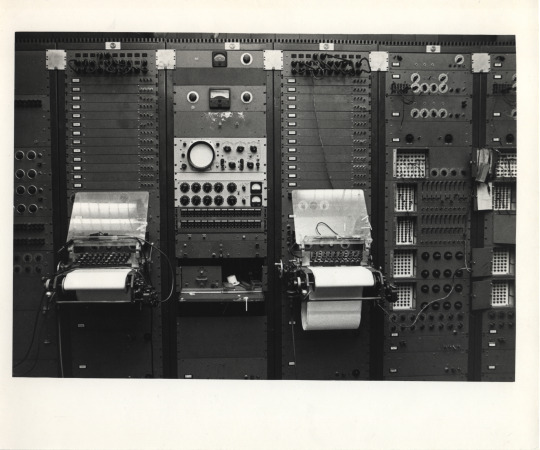

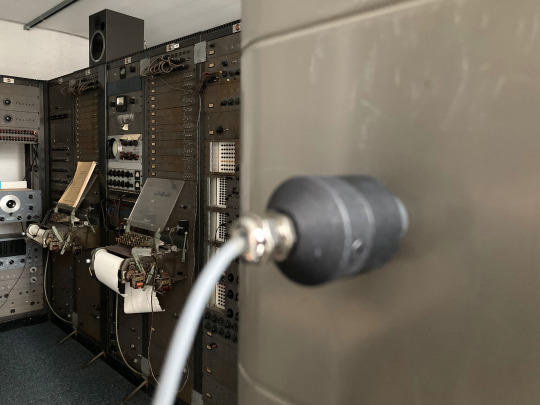

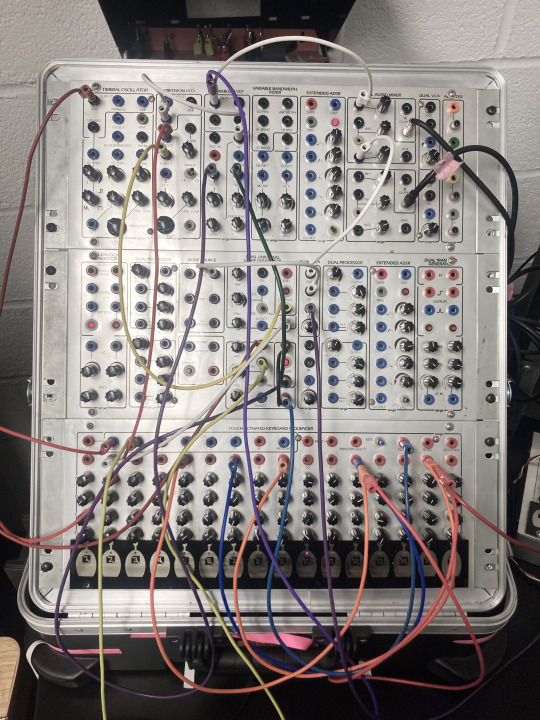
STATE MUSIC — COMPUTER MUSIC CENTER AT COLUMBIA UNIVERSITY
I spent five weeks in NYC between March and April 2023. It was a fantastic opportunity to work at the Computer Music Center in New York. The CMC is the first electronic music studio in the USA and Seth Cluett was kind enough to let me continue my research in the best conditions.
During this stay I was able to compose two new pieces for my forthcoming debut album State Music. The first was recorded in Studio 324 on two very early versions of Buchla and Serge analogue modular systems and two Bode frequency shifters. The process was similar to what I had done at EMS Stockholm, Radio Belgrade, KSYME Athens and Willem Twee Studio in Den Bosch. I tried to adapt to the machines installed in the studio, tested a lot of patches and recorded many hours of textures, accidents and other sonic events using a variety of techniques. The editing, collaging, layering and mixing was done later in my studio. I just followed one rule. Don't use the same recording twice. No loops, nothing like that.
The second composition was recorded in Jace Clayton's office. Why? Because the RCA Mark II, considered one of the first music synthesizers ever, still sits in that room. The synth has been out of order since 1976, when someone broke into the Prentis Hall building and vandalised the machine. But I decided to make use of it anyway. I opened one of the office windows to let sounds from the city into the room and recorded the tiny vibrations caused by street noise with a geophone magnetised to the synthesizer. In this way the synthesiser essentially acted as a loudspeaker. A cheap recorder was placed near the window. Two wide cardioid microphones were placed in the middle of the room for a high quality recording. Most of the time I sit in front of the synthesizer and do nothing but listen, and every now and then I flip a switch, turn a potentiometer or unplug a patch cable to activate the acoustic space of the office and make the metal frame of the machine vibrate.
It was an amazing moment. I've been working on the State Music project since 2018. I realised that being in that room with that silent machine felt like achieving something. My understanding of electronic music history is much deeper. The links between early synthesizers and the military industry are now much clearer to me. State music? Corporate music? I don't know and it doesn't matter.
Here's an anecdote from The Enabling Instrument: Milton Babbitt and the RCA Synthesizer" a paper by Martin Brody.
When the Mark-I appeared in 1955, it was listed in the RCA Acoustics Laboratory inventory with a proud comparison: The synthesiser was 'second only to the Typhoon rocket simulator as the largest single assembly to come out of the David Sarnoff Research Center'. [Although the Mark-I was built to recreate a peaceful expression of human subjectivity rather than to obliterate a hostile and remote man-machine, its input/output components were as indifferent to the workings of the psyche as an anti-aircraft predictor.As Harry Olson recalled, to test their new machine, Olson and Belar followed Seashore's playbook of analysing past performances. The goal was not to expose the musical mind, but to simulate the sounds of acoustic instruments and human performers with the utmost precision.
I would like to thank Seth Cluett, Anna Meadors, Jace Clayton and Nick Patterson for their help.
#large#RCA#STS Serge synthesizer#Buchla 100#RCA Mark II#Victor#Computer music center#Seth Cluett#Martin Brody#Milton Babbit#Vladimir Ussachevsky#Milton Babbitt
5 notes
·
View notes
Text
#AI#LLM#GPT#MIT News - Artificial intelligence#Anya Ventura | Arts at MIT#Re-imagining the opera of the future
1 note
·
View note
Text
Invisible°Show presenta
EVICSHEN (San Francisco, U.S.) + 3 dj-set dal collettivo Ono

EVICSHEN (San Francisco, USA) Evicshen è Victoria Shen, un'artista del suono, performer e inventrice di strumenti musicali. A Boston è stata allieva e assistente della creatrice di strumenti elettronici e musicista noise Jessica Rylan (discepola, a sua volta, del pioniere nella sintesi del suono Don Buchla). Le sue cacofonie ricorrono a sintetizzatori analogici (i Flower Electronics della stessa Rylan: "il meglio dei sintetizzatori modulari degli anni '60 e '70, effetti di pedali di chitarra anni '80 e teoria del caos"), oscillatori, microfonografi, dischi in vinile e altri strumenti autocostruiti per amplificare il suono di oggetti comuni: tra questi, ha inventato i Noise Combs, pettini per capelli dotati di microfono a contatto, e le Needle Nails, unghie di acrilico con aghi da giradischi che le permettono di suonare fino a 5 solchi di un disco alla volta (un'idea particolarmente apprezzata dal team creativo di Beyoncé, che ne ha tratto ispirazione per un video prodotto per British Vogue). La pratica multimediale e fai-da-te di Shen si estende oltre la strumentazione, con metodi non tradizionali di distribuzione degli album: il vinile del suo Hair Birth, del 2020, ha una copertina in rame che si può ridurre ad altoparlante, attraverso cui - una volta collegato al giradischi - lo stesso disco può essere ascoltato; di recente, ha iniziato a pubblicare dischi in resina di cut-up fatti a mano a partire da materiali ritrovati, proponendo non semplici pièce musicali, ma autentici oggetti d'arte. L'approccio non conforme di Evicshen decostruisce i concetti di materialità, valore e produzione di massa, integrando e ricontestualizzando le tecniche del readymade e dell'assemblaggio di tecniche per concentrarsi sulla fisicità del suono e sulla sua relazione con il corpo umano, indagando gestualità e grana sonora piuttosto che armonia e ritmo, in un repertorio d'innovazioni e sculture soniche con cui esplorare le possibilità di estrarre suono e rumore dal quotidiano e con cui riflettere sul limine tra espressione individuale e massificata, aura e industria, controllo e caos, senso e non senso. Classe '89, influenzata da Jean Baudrillard, ha suonato con clipping., Maria Chavez, Aaron Dilloway, Wolf Eyes, John Wiese, Xiu Xiu, Justice Yeldham e Bonnie Prince Billy. Attualmente lavora per il Center for Computer Research in Music and Acoustics di Stanford e per la School of Visual Arts di New York. https://evicshen.com/sound
A precedere e a seguire la performance live di Evicshen: 3 dj-set dal collettivo Ono
Ono è un collettivo di dj e producer che si propone come contenitore di sottoculture musicali, un luogo dove incanalare, diffondere e amplificare energie inespresse. Organizzando eventi di musica elettronica, workshop e attività culturali mirate oltre alla costruzione di rapporti, anche alla sensibilizzazione verso linguaggi lontani nel tempo, il collettivo itinerante entra in dialogo con diversi spazi della città di Bergamo con la volontà di sensibilizzare a indagare le connessioni tra linguaggi e sfaccettature della club culture contemporanea e passata. www.instagram.com/ono.collective www.mixcloud.com/onosecond ore 21.30 SMIYYA Collisioni elettroniche tra ritmi, voci e strumenti dal Sudovest asiatico e dal Nordafrica, per un'estasi a base di electroṭarab. Membro di Ono | www.instagram.com/smi.yya/ ore 23.30 Laada Amante dei boschi, co-fondatore di Ono e Inascolto, membro di FUCK!LACRÈME e cupocupo, propone intrecci e giravolte del subconscio - e bassi ovunque | www.instagram.com/ea_gre/ ore 01.00 JIIJI Percussionista, co-fondatore di Ono, membro di FUCK!LACRÈME, esplora la scena dell'elettronica contemporanea influenzata dai generi africani e afro-latini, dove ritmi e percussioni prevalgono | www.instagram.com/_._jiiji_._/
N.B. Informazioni utili:
Apertura porte alle ore 21:30
Per questo evento è necessaria la prenotazione. Per sapere il luogo esatto e prenotarsi: [email protected]
Chiediamo un’offerta di 10€ a vostra discrezione, per la copertura delle spese e degli artisti
Durante la serata sarà a disposizione un servizio bar con mescita di vino e birra

www.performatorio.it
1 note
·
View note
Text
CBSE School Infrastructure: Importance and Impact on Education
The infrastructure of a school plays a crucial role in creating an environment that is conducive to learning and development. The Central Board of Secondary Education (CBSE), one of India's leading educational boards, recognizes the significance of school infrastructure and its impact on the quality of education. In this article, we will explore the importance of CBSE school infrastructure and its far-reaching impact on the overall educational experience.
First and foremost, a well-designed and properly equipped infrastructure provides a safe and secure environment for students, teachers, and staff. Best cbse School in Badangpet Adequate lighting, ventilation, and sanitation facilities are essential for promoting a healthy and hygienic atmosphere, which in turn contributes to the physical well-being of everyone within the school premises. CBSE schools prioritize the safety and comfort of their students by ensuring that their infrastructure meets the necessary standards and regulations.
CBSE school infrastructure also plays a significant role in enhancing the teaching and learning experience. Well-equipped classrooms with comfortable seating arrangements, proper lighting, and acoustics create an optimal learning environment. This facilitates effective communication between teachers and students, ensuring that the transfer of knowledge is efficient and engaging. In addition, the availability of modern teaching aids, such as smart boards, projectors, and audio-visual equipment, enables teachers to employ innovative teaching methods and make lessons more interactive and dynamic.
Libraries and resource centers are integral components of CBSE school infrastructure. These spaces provide students with access to a wide range of books, reference materials, and digital resources, fostering a culture of reading, research, and self-learning. Well-stocked libraries encourage students to explore various subjects beyond their textbooks and develop a love for lifelong learning. CBSE schools often invest in state-of-the-art libraries that offer a diverse collection of books and digital resources to cater to the intellectual needs of their students.
Sports and recreational facilities are another vital aspect of CBSE school infrastructure. Physical fitness and extracurricular activities are given due importance by the board, recognizing their positive impact on students' overall development. Playgrounds, sports fields, indoor sports facilities, and activity rooms encourage students to participate in physical activities and team sports, promoting a healthy and active lifestyle. These spaces also serve as venues for cultural events, competitions, and social gatherings, fostering a sense of community and camaraderie among students.
Laboratories for science, computer science, and other subjects are essential components of CBSE school infrastructure. These well-equipped laboratories provide students with hands-on experience and practical knowledge, allowing them to apply theoretical concepts and develop critical thinking and problem-solving skills. Science laboratories enable students to conduct experiments, make observations, and analyze data, fostering a scientific temper and nurturing a passion for scientific exploration. Similarly, computer labs equipped with the latest technology enable students to develop digital literacy and proficiency in information technology.
CBSE school infrastructure also includes dedicated spaces for co-curricular and extracurricular activities, such as art studios, music rooms, dance studios, and auditoriums. Best cbse School in Nadergul Hyderabad These spaces provide students with platforms to showcase their talents, explore their creative potential, and develop skills beyond academics. Such activities promote holistic development, boost self-confidence, and instill a sense of discipline and commitment among students.
In conclusion: CBSE school infrastructure plays a pivotal role in shaping the educational experience and outcomes for students. It provides a safe and conducive environment for learning, enhances teaching effectiveness, and offers resources and facilities that support academic and personal growth. The emphasis on well-designed classrooms, libraries, laboratories, sports facilities, and co-curricular spaces by CBSE schools demonstrates a commitment to providing a holistic and enriching educational experience. By investing in quality infrastructure, CBSE schools create an ecosystem that nurtures students' potential, fosters their curiosity, and equips them with the necessary skills and knowledge to thrive in a rapidly.
#Best cbse School in Badangpet#Best cbse School in Nadergul Hyderabad#Best cbse School in Balapur Hyderabad#Best cbse School in Adibatla Hyderabad
0 notes
Text
I really liked this video when I watched it! I had this thought to really strike it home in that in his set up Farajii overstates the "orientalism" case in media a bit. While it used to be quite bad its improved a lot of the past ~30 years, with contemporary works in particular aiming for a lot more accurate clothing, settings, cultural consultants, etc. He mentions Istanbul/Turkey, and picks out a cheeky music video, but that sits right along movies like idk Aftersun which portrays the place full of beaches, water, and forests. Or he mentions the Turban Warriors of Netflix's latest Alexander documentary, which is laughably bad but the Greek outfits are awful too! That documentary sucked in general on these things - and there is a thing where history is essentialized, people only have a few "old" iconographies in their head, and media is torn between accuracy and recognition (every "medieval" armor outfit is from like ~14th century France for example). Buts its not so region specific as all that, Europe suffers too. Is it perfect now? Of course not. But way better.
....Except for music. Its almost hilarious how bad it still is at being accurately culturally coded, in an era where a lot more effort is being put into cultural context. You do actually have games like Crusader Kings III, which is meticulously researched on things like dress and naming systems, and then it just completely gives up on having an accurate soundtrack. Which I think is revealing, because like you get why 19th century "Tales of the Orient" all invent a fantasy East, right? They didn't care. But people clearly do care more now, but music is just tossed aside. On his main topic Farajii is completely correct, in a way that is kind of shocking, and he really hammers it.
Which imo speaks to the nature of music as the "primal" art. Visual language is referential, its felt to some degree intellectually, "oh yes that is a bird, I recognize that". While music quickly becomes impossible for most people to describe why they enjoy it, it works via its own language. Its way easier to just change referents via knowledge spread; show people real pictures of Istanbul and they will shift their view a bit. But the music stuff imo implants itself young and is "inherently" enjoyable, with less anchors to the real world. Its hard to get people to not "want" it in their media.
(also Farajii is SUCH an acoustic supremacist he shits on VST's like he is getting paid by Guitar Center for it, computers are fine man I will not stop mocking you for this ^_^)
youtube
long but fascinating video. the basic criticism is p much spelled out in the thumbnail there: Western music that labels itself 'Persian', 'Arabic', 'Egyptian' etc or serves as soundtracks for Middle Eastern settings is always a mishmash of wildly geographically separated regional elements that almost exclusively refers back to other Western orientalist music, but passes itself off as the real thing enough that most people have no idea what, say, Iranian music actually sounds like. it's certainly true... but the really interesting part for me is the details: Faraji breaks down the stereotypical elements of that orientalist style (the Armenian duduk, melodies that walk up and down the double harmonic major scale, a certain very specific vocal style) and describes what's missing (e.g. the many more common modes of Iranian music which use microtonal quarter tone steps, the complex ornamented articulations, the specific 'accents' of different regions) and in a fascinating bit, makes a similar mishmash of regions applied to Europe to make a parody 'Scottish' song which honestly kinda slaps. he's also got a pretty good analysis of where this stuff comes from in the affordances of Western instruments and VSTs - it's nearly impossible to play microtonal music on a guitar or piano, and Western musicians don't really learn how to do it
I don't have much to add besides 'interesting video!' but I'll definitely be using this channel a bit in the next big music theory post I'm cooking up (which will mainly be about trying to understand the process of composition). he's got another long video on Iranian music theory too and I'm looking forward to checking it out...
#Ofc its not just this factor other things are a big part of this 'gap' - just keeping my point tight#All that music fucks too just call it “fantasy desert” music it would be fiiiine
615 notes
·
View notes
Text
Zodiac Signs, Cities & Curious Facts! 🌆
Each city was selected by me from "The Rulership Book" by Rex E. Bills, alongside one fact that matches that particular sign's energy! There are more cities and places that align with the vibration of each sign, but these are the ones I picked for this post. All pictures are from Google Images.
Enjoy this random and (hopefully) fun thread!😁
♈Aries: FLORENCE, Italy
Florence has a unique street festival: The "Calcio Storico" is a traditional street football game played annually there. The game involves four teams representing the four historic quarters of the city, and it's known for its rough and intense style of play!


♉Taurus: LEIPZIG, Germany
Leipzig is known as the "City of Music": Leipzig has a rich musical heritage and is considered one of the world's most important cities for classical music. Famous composers such as Johann Sebastian Bach, Richard Wagner, and Felix Mendelssohn Bartholdy have strong connections to Leipzig, and their music is celebrated in the city's numerous concert halls, museums, and festivals.

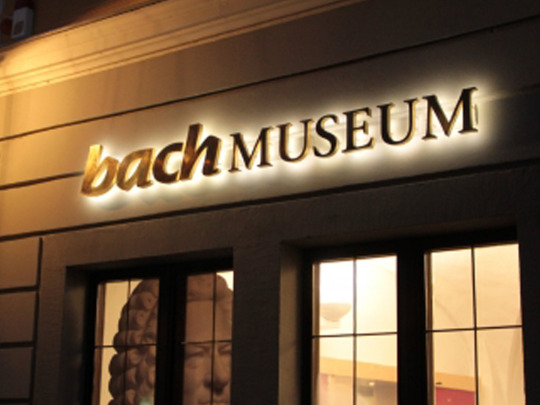
♊Gemini: LONDON, England
London has a "whispering gallery": The Whispering Gallery in St. Paul's Cathedral is a circular gallery that runs around the interior of the dome. Due to its unique acoustics, if you whisper against the wall on one side of the gallery, the sound can be heard on the other side, over 100 feet away.


♋Cancer: ISTANBUL, Turkey
Istanbul has a famous street for cats: The "Cat Street" or "Kedi Sokak" in Turkish is a narrow street in the historic district of Sultanahmet that is home to dozens of stray cats. The cats are well-fed and cared for by locals, and the street has become a popular tourist attraction.


♌Leo: BERLIN, Germany
Berlin is a graffiti artist's paradise: The city has a long history of street art and is home to some of the most famous graffiti murals in the world. The East Side Gallery, a section of the Berlin Wall that has been turned into an open-air gallery, features over 100 paintings by artists from around the world.


♍Virgo: MOSCOW, Russia
Moscow has a rich literary history: Many famous Russian writers, including Leo Tolstoy, Fyodor Dostoevsky, and Anton Chekhov, lived and worked in Moscow. It also has the largest number of public libraries in the world: "The Russian State Library" , which is the largest library in Europe and the second largest library in the world, after the Library of Congress in the United States.

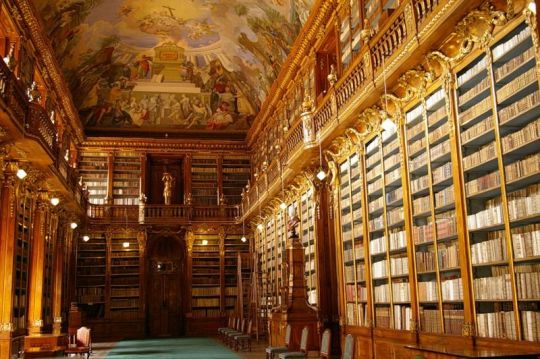
♎Libra: VIENNA, Austria
Vienna has a rich musical history: Vienna has been a center of musical innovation and creativity for centuries and has been home to many famous composers such as Mozart, Beethoven, and Strauss. Today, the city is renowned for its classical music scene and is home to the world-famous Vienna Philharmonic Orchestra.
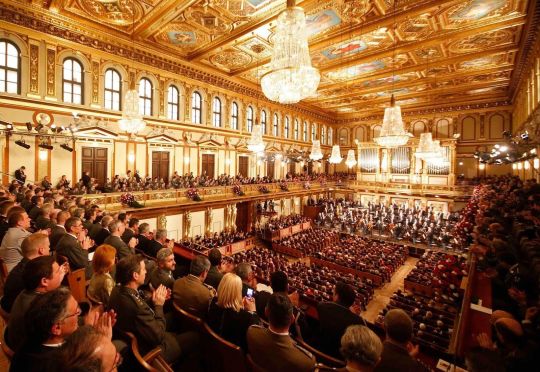
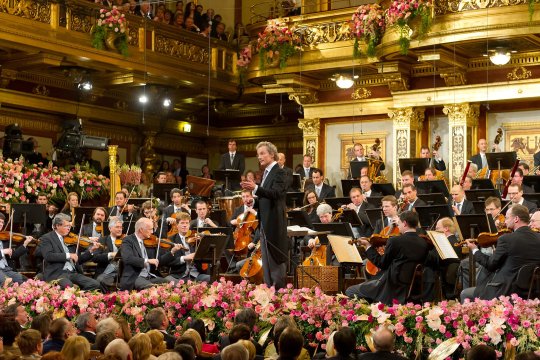
♏Scorpio: TOKYO, Japan
Tokyo has a unique fashion scene: Tokyo's fashion scene is known for its avant-garde and eclectic styles, with Harajuku being the center of youth fashion culture. "Gothic Lolita" is part of Harajuku, and it incorporates darker and more macabre elements into the Lolita fashion aesthetic.


♐Sagittarius: TUSCANY, Italy
Tuscany is home to the oldest university in Europe: The University of Bologna, which is located in Tuscany, is the oldest university in Europe, having been founded in 1088. It is still one of the most prestigious universities in Italy.


♑Capricorn: BRUSSELS, Belgium
Brussels is home to the "Atomium": The Atomium is a unique architectural structure in Brussels that was built for the 1958 World Exposition. It is designed to represent an iron crystal magnified 165 billion times, and it has become an iconic symbol of the city.


♒Aquarius: LOS ANGELES, California
LA is the birthplace of the Internet: The first successful transmission of a message over the Internet occurred on October 29, 1969, between two computers located at the University of California, Los Angeles (UCLA) and the Stanford Research Institute. This event is considered the birth of the Internet.
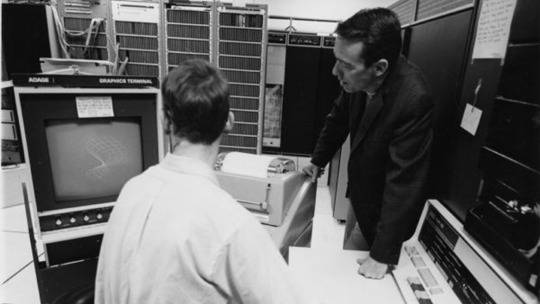

♓Pisces: GALICIA, Spain
Galicia is home to an ancient spiritual destination: The Way of St. James, also known as the Camino de Santiago, is a famous pilgrimage route that leads to the cathedral of Santiago de Compostela in Galicia. Every year, thousands of people from all over the world make the 780 km journey on foot, bicycle, or horseback. Many of them walk the route for spiritual reasons, while others enjoy the physical challenge and the opportunity to meet people from all over the world.


Now, that was a pleasure to put together! How do you feel about the fact/city for your sign? As a Virgo, I'd love to visit the Moscow library, but as a weird/edgy fashion sucker, Tokyo seems like a whole lot of fun! Also, the Aries one made me LOL! Y'all just can't stop fighting, can you? 😂
Which fact/city is your favorite one(s)? Let me know down below! 🖤
- Foxbörn
ᴍᴀꜱᴛᴇʀʟɪꜱᴛ 1
ᴄʜᴀʀᴛ ʀᴇᴀᴅɪɴɢꜱ
ᴡᴀɴᴛ ᴛᴏ ʙᴜʏ ᴍᴇ ᴀ ᴄᴏꜰꜰᴇᴇ?
#astro notes#astrology#astro observations#astrology notes#birth chart#zodiac#astro community#zodiac signs#horoscope#aries#taurus#gemini#cancer#leo#virgo#libra zodiac sign#scorpio#sagittarius#capricorn#aquarius#pisces#travel
137 notes
·
View notes
Text
Study confirms superior sound of a Stradivari is due to the varnish
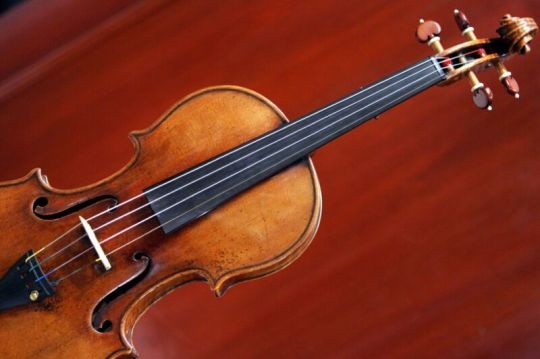
Enlarge /
A 1729 Stradivari known as the "Solomon, Ex-Lambert" on display at Christie's in New York in March 2007.
Along with Andrea Amati and Andrea Guarneri, Antonio Stradivari dominated the so-called Golden Age of Violins (roughly 1660 to 1750), and the instruments they crafted remain the gold standard today in terms of acoustic quality. World-renowned cellist Yo-Yo Ma has long favored a Stradivarius instrument, as does violinist Joshua Bell. But scientists have been arguing for years about precisely why these instruments have such superior sound. A recent paper published in the journal Angewandte Chemie confirms a theory dating back to 2006: the secret lies in the chemicals used to soak the wood, most notably borax, zinc, copper, alum, and lime water.
I've written extensively about this topic in the past. The (perceived) unique sound can't just be due to the instrument's geometry, although Stradivari's geometrical approach did give us the violin's signature shape. One hypothesis is that Stradivari may have used Alpine spruce that grew during a period of uncommonly cold weather, which caused the annual growth rings to be closer together, making the wood abnormally dense. Another prevailing theory has to do with the varnish: namely, that Stradivari used an ingenious cocktail of honey, egg whites, and gum arabic from sub-Saharan trees—or perhaps salts or other chemicals.
Then again, the difference may be all in our heads. A player's instrument preference is highly subjective, and there's some evidence of so-called "psychoacoustics" at play: that is, we've become so awed by the name Stradivarius that it influences how we evaluate or respond to the sound of one of Stradivari's instruments.
In fact, a 2012 double-blind study of 21 experienced violinists found that most of the subjects preferred playing the newer instruments; the Stradivarius ranked last in their preferences. Most of them couldn't tell the difference between the old and new instruments, with no significant correlation between an instrument's age and its monetary value. "Rather than searching for the 'secret' of Stradivari, future research might best be focused on how violinists evaluate instruments, on which specific playing qualities are most important to them, and on how these qualities relate to measurable attributes of the instruments, whether old or new," the authors concluded.
The varnish theory dates back to 2006, when Joseph Nagyvary, a professor emeritus of biochemistry at Texas A&M University, made headlines with a paper in Nature claiming that it was the chemicals used to treat the wood—not necessarily the wood itself—that was responsible for the unique sound of a Stradivarius violin. Specifically, it was salts of copper, iron, and chromium, all of which are excellent wood preservers but may also have altered the instruments' acoustical properties. He based his findings on studies using infrared and nuclear magnetic resonance spectroscopy to study the chemical properties of the backboards of several violins (the backboard is the instrument's largest resonant component).

Enlarge /
Close-up of the sculpture of Antonio Stradivari (1644–1737) in Corso Garibaldi, Cremona, Italy.
Elena Piccini/Fototeca Gilardi/Getty Images
In 2007, physicist George Bissinger of East Carolina University used a 3D scanning laser to produce detailed and quantitative measurements of the acoustic properties of several Strad violins—essentially mapping out how they vibrate to produce those heavenly tones. Bissinger hung each of the five violins by elastic bands, then struck the wood of the top plate with a little hammer while recording and measuring the vibrational modes with the scanner.
He specifically wanted to measure the in-plane and out-plane motion: the in-plane motion is the source of much of the sound energy, and this converts into out-plane motion, which produces the rich tonal sounds we associate with fine violins. In addition, he hired a world-class violinist to play each of the violins used in the study for an hour to get the feel of the instruments and then offer subjective ratings for each one. The musician's subjective analysis was then compared to the objective acoustical data. The resulting measurements were sufficiently detailed to reconstruct the stiffness properties of the wood used to make the Strads, according to Bissinger.
CT scans
In 2008, Berend Stoel from the Leiden University Medical Center in the Netherlands collaborated with a luthier named Terry Borman to take CT scans of several Strads, along with several modern instruments for comparison. The aim was to study the density of the woods used, since differentials in wood density impact vibrational efficiency and thereby the production of sound. Stoel had developed a computer program that noninvasively calculated lung densities in people suffering from emphysema, and he adapted it to study wood densities from CT scans.
There wasn't much significant difference between the average wood density of the classical and modern violins used in the study. But the density differences between wood grains of early and late-growth wood was significantly smaller in the classical Cremonese violins compared with modern violins. "Our results clearly document basic material property differences between the woods used by the classical Cremonese and contemporary makers," the authors concluded.
More evidence in favor of Team Varnish came from a 2016 study by researchers at the Swiss Federal Laboratories for Materials Science and Technology (EMPA). They studied how a varnish's chemical composition, thickness, and degree of penetration into the wood affected the acoustics of the instrument.
As I wrote for Gizmodo in 2016:
They used samples of Norway spruce tone wood cut from the same tree and coated the samples with different kinds of varnish: two of their own making, and two used by German master violin makers. Then they conducted vibration tests of the samples over time, using x-ray tomography to measure the effects.
The researchers found that all the varnishes increased the wood's dampening ability—that is, how well it absorbs and stops vibrations. That extra damping, compared to unvarnished wood, leads to a warmer, mellower, and aesthetically pleasing sound. The varnishes favored by German luthiers performed slightly better in that regard, and also made for better sound radiation (louder tones).
A 2017 study by Taiwanese researchers compared the maple used by Stradivarius with modern, high-quality maple wood. Their analysis showed evidence of chemical treatments in the form of aluminum, calcium, and copper, among other elements. And thanks to the decomposition over time of a wood component called hemicellulose, the Stradivari and Guarneri instruments used in the study had 25 percent less water than modern instruments. "This is fundamentally important because the less moisture, the more brilliant the sound," Nagyvary told The New York Times.
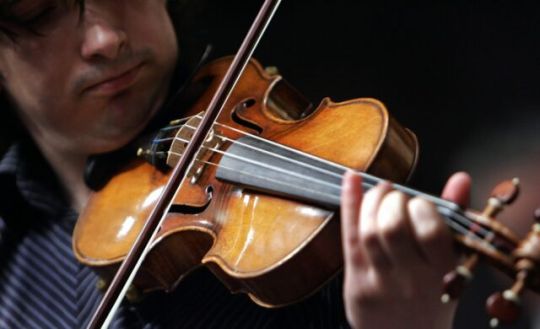
Enlarge /
Violinist Adrian Pintea plays a 1729 Stradivari known as the "Solomon, Ex-Lambert" in 2007 at Christie's in New York.
Don Emmert/AFP/Getty Images
This latest study analyzes trace chemicals preserved in the maple wood used to make the soundboards of Stradivari and Guarneri instruments. The research involved a rare collection of Cremonese wood samples of spruce and maple used by Stradivari, Guarneri, and Amati, and the results were then compared to modern spruce and maple tonewoods, as well as woods from antique Chinese zithers and less exceptional old European violins.
They found traces of borax and several metal sulfates in the wood samples dating between 1600 to 1750. As David Bressan explained over at Forbes:
Borax, also known as sodium-borate, occurs naturally in evaporite deposits produced by the repeated evaporation of seasonal lakes. Borax is still used today in various household laundry and cleaning products, and in the past was used also as an insecticide and fungicide, killing pests. Copper and zinc sulfates, often associated with copper ore, likely served the same purpose. Alum, an evaporite mineral containing sulfur, aluminum, potassium and sodium, was added to the mix to form a weak acidic environment in the wood, preventing mold growth. Halite, common table salt, was added as moisture control, keeping the wood too dry for microbes and fungi, and at the same time preventing the deformation of the instrument caused by humidity fluctuations.
This is welcome news to Nagyvary, who co-authored this latest paper. "This new study reveals that Stradivari and Guarneri had their own individual proprietary method of wood processing, to which they could have attributed a considerable significance," he told Texas A&M Today. "They could have come to realize that the special salts they used for impregnation of the wood also imparted to it some beneficial mechanical strength and acoustical advantages. These methods were kept secret. There were no patents in those times. How the wood was manipulated with chemicals was impossible to guess by the visual inspection of the finished product."
Nagyvary still thinks more research is needed to shed further light on the connection between the chemicals used to treat the wood and the sound quality of the finished instruments. "First, one needs several dozens of samples from not only Stradivari and Guarneri, but also from other makers of the Golden Period (1660-1750) of Cremona, Italy," he said. "There will have to be better cooperation between the master restorers of antique musical instruments, the best makers of our time, and the scientists who are performing the experiments often pro bono in their free time."
DOI: Angewandte Chemie, 2021. 10.1002/anie.202105252 (About DOIs).
via:Ars Technica, September 16, 2021 at 07:00PM
2 notes
·
View notes
Text
School with Best Infrastructure in Bhopal: A Blueprint for 21st Century Learning
Introduction
In today’s competitive educational environment, infrastructure plays a vital role in shaping a student’s overall learning experience. Beyond textbooks and exams, the learning environment impacts creativity, motivation, comfort, and mental well-being. A school with best infrastructure is not just a building—it’s a space where young minds evolve with access to modern resources, innovative learning tools, and a secure atmosphere. Bhopal, a city known for its educational aspirations, hosts several institutions that reflect architectural excellence and futuristic amenities.

This article highlights the elements that define superior school infrastructure and how such schools are redefining education in the city. We also examine how modern facilities contribute to being among the top 10 CBSE schools in Bhopal, serving as a benchmark for others.
The Role of Infrastructure in School Excellence
Modern-day schooling is about preparing students for global challenges. While quality teaching remains crucial, the surroundings in which students learn can either enhance or hinder that quality. A well-designed CBSE school in Bhopal integrates functionality, aesthetics, safety, and sustainability.
Key components of exceptional infrastructure:
Spacious and smart classrooms
Digital and tech-enabled learning tools
Laboratories and innovation hubs
Sports and fitness zones
Libraries and multimedia centers
Safety and hygiene standards
When these elements work in synergy, the outcome is a robust academic environment with long-term developmental benefits.
1. Smart Classrooms that Redefine Learning
The heart of any school lies in its classrooms. In a school with best infrastructure, classrooms are more than four walls—they are digitally-equipped learning hubs.
Interactive whiteboards and projectors
Audio-visual aids for better comprehension
Comfortable seating and ergonomic furniture
Climate control systems for year-round comfort
Natural lighting to reduce eye strain
These features ensure the attention span of students remains high and the learning experience becomes dynamic and memorable.
2. State-of-the-Art Laboratories
To nurture scientific curiosity, a school must provide students with the right tools and environment. Schools with excellent infrastructure include:
Separate and fully equipped Physics, Chemistry, and Biology labs
Mathematics labs with models and interactive aids
Computer labs with high-speed internet and modern systems
Robotics and AI labs for future tech exposure
This setup encourages practical learning and critical thinking from an early age, placing such institutions among the best CBSE schools in Bhopal.
3. Library and Resource Centers
A modern school library goes beyond a collection of books. It’s a place for research, self-study, and digital learning.
Thousands of curated titles across genres and subjects
Digital library access through tablets and e-readers
Research journals, periodicals, and reference material
Cozy reading corners and individual study areas
Such infrastructure supports academic exploration and helps students become independent learners.
4. Sports Infrastructure for Physical Excellence
Physical development is an integral part of education. The top 10 CBSE schools in Bhopal recognize this by offering world-class sports infrastructure.
Full-size football and cricket grounds
Indoor facilities for badminton, table tennis, and basketball
Skating rinks, swimming pools, and gymnasiums
Professional coaches and structured training programs
The availability of such amenities ensures students stay physically fit while learning values like teamwork and discipline.
5. Performing Arts and Creativity Zones
A CBSE school in Bhopal with high-end infrastructure makes room for creative growth as well.
Music and dance rooms with instruments and acoustics
Art studios equipped with modern tools and materials
Theatre halls with lighting and sound systems
Audio-visual production studios for media creation
These facilities inspire students to explore and express their creative side beyond academics.
6. Focus on Early Childhood Infrastructure
The foundation of education begins in early years. The best preschool in Bhopal and the best pre primary school in Bhopal are known for their vibrant, secure, and stimulating environments.
Colorful and age-appropriate furniture
Safe play areas with rubberized flooring
Interactive storytelling corners
Sensory development toys and learning kits
Clean nap zones and child-friendly restrooms
These features ensure toddlers learn joyfully and safely, establishing a strong base for future schooling.
7. Emphasis on Safety and Hygiene
Any discussion about the school with best infrastructure is incomplete without addressing safety and cleanliness. Leading schools adopt a zero-compromise policy when it comes to child security.
24/7 CCTV surveillance across campus
Secured entry and exit gates with biometric systems
Fire safety equipment and evacuation drills
Dedicated medical rooms with trained staff
Clean washrooms and purified drinking water systems
Such meticulous planning reassures parents and creates a stress-free environment for students.
8. Technology Integration at Every Level
Tech-savvy schools lead the way when it comes to infrastructure. Integration of technology is key to keeping up with the pace of global learning.
Online learning management systems (LMS)
Parent and teacher communication apps
Real-time student performance tracking tools
Wi-Fi enabled campus for digital access
Coding, programming, and STEM labs
Parents looking for a CBSE school in Bhopal near me are often drawn to campuses that show real digital transformation.
9. Green and Sustainable Campuses
Modern infrastructure must also be eco-friendly. The best institutions build campuses that are sustainable and environment-conscious.
Solar-powered classrooms and street lights
Rainwater harvesting systems
Organic gardens and green zones
Plastic-free policies
Waste segregation and recycling initiatives
These practices create awareness among students and instill responsibility toward nature.
10. Accessibility and Convenience
Schools must be easily accessible to ensure convenience for parents and students. Some of the best CBSE schools in Bhopal are strategically located and offer efficient connectivity.
Buses with GPS tracking systems
Pick-up and drop safety protocols
Wide internal roads and parking bays
Signage and ramps for differently-abled access
This ease of access makes these schools a practical choice for families across Bhopal.
11. Affordable Quality Education
Often, parents assume that advanced infrastructure means higher fees. However, many schools prove that affordability and excellence can coexist. There are options offering the best school in Neelbad with low fees, equipped with all essential modern amenities.
Transparent and pocket-friendly fee structures
No hidden charges or external tuition dependencies
Value-based facilities like in-house labs and libraries
Optional services for transport and meals
These schools make quality education accessible to all segments without compromising on infrastructure.
12. Academic and Co-Curricular Synergy
Schools that provide both strong academics and vibrant infrastructure naturally secure the best CBSE results in Neelbad and other Bhopal regions.
What helps these schools achieve this:
Seamless blend of theory and practical learning
Timely assessments and smart evaluation methods
Project-based learning with real-world applications
Continuous motivation from teachers and mentors
Healthy competition through inter-house and inter-school events
Students here don’t just score well; they emerge confident and future-ready.
13. Campus Culture and Student Wellbeing
In schools with exceptional infrastructure, culture and care go hand in hand.
Dedicated counsellors for mental health and guidance
Regular workshops on life skills and emotional intelligence
Balanced schedules to reduce academic stress
Inclusion of mindfulness and yoga programs
All these aspects make students feel secure, inspired, and valued—critical ingredients for lasting success.
Conclusion
Bhopal has come a long way in redefining school infrastructure. The city now proudly hosts institutions that rival the best in the country. These campuses offer a powerful combination of advanced facilities, dedicated faculty, safety standards, and co-curricular depth. Whether it’s a search for the best private school in Bhopal, a pre-primary option, or a full-fledged CBSE senior secondary school, infrastructure has become the cornerstone of quality education.
Choosing a school with best infrastructure is not just about aesthetics—it’s about creating an environment that enables learning, supports mental well-being, encourages innovation, and prepares students for life.
For parents planning a long-term academic journey for their children, these schools offer more than just education—they offer the future.
0 notes
Text
TAFAKKUR: Part 85
Music Therapy
In 1944 Edgar Cayce, who healed thousands of people while in a trance state, said "Music is the medicine of the future."
Currently, some religious scholars in the Islamic world denounce music. This paper analyzes the Islamic perspective on music and singing, and concludes that using music as a therapeutic agent in medicine is not forbidden.
Documented evidence shows the power of music can be tapped to heal the body, strengthen the mind, and unlock the creative spirit. Published papers and journal articles offer dramatic accounts of how doctors, musicians, and healthcare professionals use music to deal with everything from anxiety to cancer, high blood pressure, chronic pain, dyslexia, and even mental illness. During childbirth, music can relieve expectant mothers' anxiety and help release endorphins, the body's natural painkillers, and thereby dramatically decrease the need for anesthesia.
Exposure to sound, music, and other acoustical vibrations can have a lifelong effect on health, learning, and behavior, for such exposure stimulates learning and memory and strengthens one's listening abilities. Music has been used as a treatment or cure from migraines to substance abuse.
One thousand years ago, Muslim physicians were in the forefront of medicine and used innovations and therapeutic techniques that are now considered modern. They treated mental illnesses by confining patients in asylums with twenty-first-century techniques of music therapy. In Fez, Morocco, an asylum for the mentally ill was built early in the eighth century, and asylums for the insane were built in Baghdad (705), Cairo (800), and Damascus and Aleppo (1270). In addition to baths and drugs, the mentally ill received kind and benevolent treatment, and were exposed to highly developed music-based therapy and occupational therapy. Special choirs and live bands were brought daily to present singing, musical, and comical performances to patients.
Malik al-Mansur Sayf al-Din Qalawun built the al-Mansuri hospital in Cairo (1284). Its most outstanding characteristic was that, just like today's advanced hospitals, provisions were made to entertain patients with light music. Professional storytellers were appointed to narrate stories and jokes (radio, TV, and computers perform these functions today). People who called the faithful to prayer would sing religious songs in their melodious voices before the morning call to prayer; so that afflicted patients might forget their suffering. This hospital still renders such services today.
Medical benefits
Music therapy has been lost for more than 1,000 years in the Muslim world and in the West. In the last three decades or so, the West has shown tremendous interest in using music therapy to treat several diseases and ailments. No one knows exactly how music heals, but it looks like our brains are wired to respond to it.
Dr. Clive Robbins, a co-founder of the Nordoff-Robbins Center for Music Therapy at New York University in New York City, says: "There is something intrinsically musical about the brain's neurological structure and the muscular function of the human organism. At a nonverbal level, music activates our minds, integrates our attention, and seems to help regulate some body functions." He has treated a child afflicted with cerebral palsy with music therapy in order to teach the child how to balance his body, coordinate his limbs' movement, and communicate. It has made him motivated and intent.
The right song seems to work in more than one way-distracting us from pain, boosting one's mood, reviving old memories, and even prompting the body to match its rhythms. Music has long been appreciated for its calming effects, but new research shows it also may have the power to restore and keep us healthy. Soothing sounds, from Tibetan chants to Beethoven symphonies, are being given scientific credit for preventing colds, easing labor pains, and even boosting anti-aging hormones. One study found that surgery patients who listened to comforting music recovered more quickly and felt less pain than those who did not. The International Journal of Arts Medicine reports that infants in intensive care units go home three days earlier, eat better, and gain more weight if the staff talks and sings to them.
Clinical studies and anecdotal evidence from music therapists suggest that the sound of music is soothing and comfortable. For example, music is credited with lowering cortisol, a stress hormone, as much as 25 percent; boosting endorphins, the body's natural opiates or feel-good drugs; reducing pain after surgery and reducing the need for sedatives and pain relievers; making patients recover from surgery faster and with less pain; possibly preventing colds; raising blood levels of Immunoglobin A (immune system fighter) to a whopping 14.1 percent; and easing labor without drugs. It also seems to help premature infants in intensive care; stimulate the brain's neural connections and promote children's spatial ability and memory; lower blood pressure as much as 5 points, reduce heart rate, improve cardiac output, and relax muscle tension; and manage non-pharmacological pain and discomfort.
But these are not all of its benefits, for research shows that music also improves the mood and mobility of people with Parkinson's, decreases nausea during chemotherapy, helps patients participate in medical treatment, decreases length of hospital stay, relieves anxiety and reduces stress, eases depression, enhances concentration and creativity, brings positive changes in mood and emotional states, increases awareness of self and environment, gives a sense of control over life through successful experiences, provides an outlet for expressing feelings, improves memory recall and thereby contributes to reminiscence and satisfaction with life. In addition, music therapy may allow for emotional intimacy with families and caregivers, relaxation for the entire family, and meaningful time spent together in a positive, creative way.
Exciting new research suggests that our brains respond to music almost as if it were medicine. Music may regulate some body functions, synchronize motor skills, stimulate mind and even make us smarter. According to Suzanne Hanser, D. Ed., a lecturer at Harvard Medical School's Department of Social Medicine: "There is no set prescription or a particular piece of music that will make everyone feel better or more relax. What counts is musical taste, kinds of memories, feelings and associations a piece of music brings to mind. Some people relax to classical music, others like the Moody Blues. The key is to individualize your musical selections."
Depression
Research conducted at the Stanford University School of Medicine provides some interesting results. For one group of 20 people aged between 61 and 86, moods rose and depression fell when they listened to familiar music they selected, on their own or with the help of a music therapist, while practicing various stress-reduction techniques. A control group who missed out on the music and the exercises saw no improvement during the 8-week study period. It helps to perform gentle exercises, depending on one's fitness level, while the music plays. Movements should be light and flowing. Breathe to the music, and gently come to rest when the music ends.
Insomnia
A study from the University of Louisville School of Nursing Research indicates that 24 out of 25 people with sleeping problems nod off more quickly, sleep longer, or get back to sleep more easily after listening to classical and New Age music. The music must be quiet and melodic, have a slow beat and few, if any, rhythmic accents. To be effective, one should skip the after-dinner coffee or tea and avoid telephone calls and TV after 9 p.m. Softer and quieter music should be played as bedtime approaches. Listen to the music in bed with a tape recorder or a CD player equipped with a silent on/off switch. One should lie quietly and take even, deep breaths.
Stress
Many studies have found that soothing melodies can ease anxiety and quiet both blood pressure and heart rate even under very stressful conditions. Everyday stress also responds to music. Select music that grabs your attention and, at the same time, relax your body so that all of your worries slip away. Slow music, like a love song sung by an accomplished singer or a calm instrumental piece may be perfect. If a slow tune gives your mind time to fret or obsess, switch to something livelier. Sit or lie down in a comfortable position and where you will not be disturbed. After a few minutes, perform a relaxation exercise.
Pain
One Yale University School of Medicine study found that people who listened to their favorite music while awake during a surgical procedure needed smaller amounts of sedatives and pain medication than those who did not. Music therapists and researchers say that physical discomfort from post-operative pain to chronic aches can be eased with flowing melodies and distracting rhythms. Dr. Alicia A. Clair, a board-certified music therapist and professor and director of music therapy at the University of Kansas in Lawrence, says that music can bring transitory relief from short-term and long-term pain and discomfort, such as arthritis and osteoporosis. Gentle and soothing stress-reducing music, which can relax and distract the mind, is helpful. Martha Burke, a board-certified music therapist in Durham, North Carolina, says: "Gently flowing music or music with a slow, steady pulse can help promote relaxation, which can then alter a patient's perception of pain. Soothing music can lower the heart rate and breathing rate, leading to further relaxation, and reduces tension that comes with the pain. We know music is so incredibly complex--it has tempo, rhythm, melody, and harmony. And so it stimulates the brain in many ways at once."
Brain damage
Samuel Wong, a Harvard-trained physician based in New York City, plays musical instruments to help patients with brain damage (from strokes) and Alzheimer's reconnect to the world. He is also music director of the Hong Kong Philharmonic and the Honolulu Symphony. "When brain damage (from stroke, Alzheimer's, etc.) leaves a devastated mental landscape, music 'builds a bridge' that allows patients to reconnect with the outside world. The study of medicine has informed my performance of music, and my learning of music has deepened my role in healing," he says. In 1996, researchers at Colorado State University tried giving 10 stroke victims 30 minutes of rhythmic stimulation each day for three weeks. Compared with untreated patients, they showed significant improvements in their ability to walk steadily. People with Parkinson's enjoyed similar benefits. Stroke victims and patients with Parkinson's walked more steadily and with better balance and speed if they practiced while hearing a balanced metrical beat or a piece of music with a powerful, even beat. A musical beat from any genre seemed to provide a rhythmic cue, which has a powerful, organizing effect on the brain's motor skills ;it helps harmonize movement almost at once, according to researchers. Scottish researchers have found that a daily dose of music significantly brightens the moods of institutionalized stroke victims. When daily music therapy was administered for 12 weeks, the patients were less depressed and anxious, and more stable and sociable than other patients in the same building. Music therapy also has proved useful in managing Alzheimer's and other neurological diseases.
Sounds of healing
Mitchell L. Gaynor, MD, director of medical oncology and integrative medicine at New York's Strang Cancer Prevention Center (affiliated with the Cornell Medical Center), says: "More doctors are seeing a connection between harmonious sound and health. If we are around very harmonious people and harmonious vibrations and harmonious sounds, we begin to feel better. I have never found anything more powerful than sound and voice and music to begin to heal and transform every aspect of people's lives. It can really change people's lives.” "We know that music is capable of enhancing the body's immune function, lowering heart rate, lowering stress-related hormones like cortisol that raise our blood pressure and depress our immune systems. It also trims complications after heart attack, calms anxiety, slows breathing and increases production of endorphins, the body's natural painkillers. Eighty percent of the stimuli that reach our brains come through our ears." "Even before birth, music makes a difference. Hearing is the first sense to develop, when the fetus is only 18 weeks old (Qur'an 32:9). We know that the unborn child hears for literally half the pregnancy and is affected profoundly by what it hears. Studies show that music by Mozart and Vivaldi actually can bring down fetal heart rate, calm brain waves, and reduce the baby's kicking. Rock music, on the other hand, appeared to drive fetuses to distraction, greatly increasing kicking." "Our bodies are 70 percent water, and thus excellent conductors for sound and vibration. We do not hear just with our ears, but literally feel vibration's sound with every cell in our body. Disharmony and noise, whether from traffic, the boss yelling at us about a deadline, or a jackhammer on the street can make us stressed, depressed, and pessimistic--all of which depress our immune systems. That is why disharmony can eventually lead to disease." "Our own voices are very underutilized healing tools. Singing is a great way to tap music's healing power. If you are self-conscious, try chanting. Anyone can do it, and you can't do it wrong. We are just seeing the tip of the iceberg as far as the incredible power of sound to affect every cell and every organ system in our bodies."(10) The Qur'an says: He fashioned him in due proportion and breathed into him something of His spirit. And He gave you (the faculties of) hearing and sight and feeling (and understanding). Little thanks do you give! (32:9, 16:78, 67:23). Dr. Keith Moore, professor and chairman of the Department of Anatomy at the University of Toronto's School of Medicine, writes in his most popular textbook on human embryology that the human embryo first gets the ears (hearing), then the eyes (sight), and next the brain (feeling and understanding or mental faculties) in that order, as mentioned in the above Qur'anic verses. On the other hand, very loud music with sounds louder than 90 decibels cause stress and ear damage. Pierce J. Howard, Ph.D., director of the Center for Applied Cognitive Studies in Charlotte, NC, says: "Very loud music creates an altered state of consciousness akin to an alcoholic or drug-induced stupor that can become addictive."
The Mozart effect
Don Campbell, a composer, music researcher and teacher, healer and the author of The Mozart Effect, learned that he had a potentially fatal blood clot in an artery just below his brain. He shrunk the blood clot from more than 1.5-inch length to one-eighth of an inch by humming quietly for three to four minutes at a time, up to seven times a day. He did this for three weeks before he went back for a second brain scan. In The Mozart Effect, he writes: "You know music can affect your mood: it can make you feel happy, enchanted, inspired, wistful, excited, empowered, comforted, and heroic. Particular sounds, tones and rhythms can strengthen the mind, unlock the creative spirit, and miraculously, even heal the body. Exposure to sound, music, and other forms of vibration, beginning in-utero, can have a life long effect on health, learning and behavior." In conclusion, one should listen to a piece of music that one finds inspirational and uplifting. Dr. Ahmed al-Kadi of Florida's Akbar Clinic conducted research on the healing power of listening to Qur'anic recitations. There is an urgent need for conducting more research on music therapy by Muslim physicians in the West and in the Muslim world.
#allah#god#muhammad#prophet#sunnah#hadith#islam#muslim#muslimah#hijab#help#revert#convert#reminder#religion#quran#ayah#dua#salah#pray#prayer#welcome to islam#how to convert to islam#new muslim#new revert#new convert#revert help#convert help#islam help#muslim help
4 notes
·
View notes
Audio
Item #: SCP-061
Object Class: Safe
Special Containment Procedures: The source code for SCP-061 is to be kept on a standard archival-quality read-only data compact disc (CD-ROM); four copies of the CD-ROM with the source code are to be stored in separate maximum-security inanimate-object lockers. Except for purposes of approved experimentation, SCP-061 is not to be loaded, compiled, or run. Research proposals for SCP-061 require written approval from site command. Only one copy of the CD-ROM containing the source code for SCP-061 may be used at a time; the CD-ROM is to be returned to storage immediately after having been used to load the source code for SCP-061 to a device.
SCP-061 must never be loaded, compiled, or run on any device which has a connection to the Internet, either directly or via another device. SCP-061 must never be loaded, compiled, or run on any device which is physically capable of wireless connectivity, regardless of whether that connectivity is in use.
For purposes of approved experimentation, SCP-061 may be loaded, compiled, and run on a LAN consisting of no more than 3 (three) devices plus peripherals. No devices are to be disconnected from the LAN during experimentation. Following the conclusion of experimentation, all devices within this LAN are to be immediately reformatted. Audio-output peripherals for this LAN are to be contained within an observation chamber surrounded with noise-canceling vacuum insulation. In the event of a perimeter breach by hostiles during SCP-061 experimentation, all devices within the LAN are to be immediately destroyed.
Description: SCP-061 is an acoustic computer program being developed by SCP researchers with the intent of producing successful countermeasures to similar programs being developed by governments and individuals around the world. Inspired by research on [DATA EXPUNGED], SCP Command saw both the potential and harm in the ability to control the brain functions of other human beings. Laymen understand that music can elicit certain emotions and memories or various sounds can elicit fear and excitement by simply being heard. Governments around the world have been attempting to expand on that premise for decades; SCP Research is the first to elicit responses on higher mental activities.
Parts of the brain affected by SCP-061 differ from those stimulated by [DATA EXPUNGED] or by subliminal messaging. Instead of acting on parts of the brain that are thought to be in control of the subconscious, acoustic frequencies produced by SCP-061 intercept conscious thoughts as they are produced and replace them. Instead of a suggestion, the human hearing center bisects the conscious thinking mind of the frontal lobe with the motor control cortical homunculus of the brain.
A baseline rhythm "convinces" the rest of the brain that the conscious mind is "asleep" and effectively stops conscious thought from continuing to the rest of the brain. In return, the frontal lobe experiences a "pause" that resembles the psychological effects of anesthesia. Acoustic codes developed by SCP-061 are interpreted by motor centers in the brain as conscious instructions and the subject typically acts accordingly. (See Addendum-01)
Subjects will normally have a "blank" facial expression while under the influence of SCP-061. They are not responsive to attempts at conversation and express no desires, such as hunger or interest in sexual advances. Though all commands are followed without question, the effects of the auditory control cease once the subject is no longer able to hear the program. Most test subjects report being unable to remember the actions they performed while under control, but a few have experienced the effect of "watching helplessly" as their body acted against their will.
The intent of such research is to discover ways to counteract the effects of auditory mind control; however, only two methods of countermeasures have proven successful as of yet. One, the subject's hearing is impaired so that the individual can no longer hear the program, either by covering the ear or deafening the subject. Two, the program itself sends a coded instruction to the hearing center of the brain, permanently shutting it down. Though the ear continues to hear, there has been no progress in finding the proper code to "reboot" the hearing center of the brain.
Addendum-01: Experiment Log
All subjects are placed under auditory control, issued a coded auditory command and then monitored.
Subject— 4402F
Command: [Sleep]
Response: Subject curled up into a fetal position on the floor and her brain began emitting alpha waves associated with sleep. Her eyes remained wide open in the typical "blank/empty" expression associated with controlled subjects, but her eyes twitched rapidly in ways associated with REM sleep.
Subject— 4427M
Command: [Run on treadmill]
Response: Subject mounted treadmill and then proceeded to run. Subject did not turn on the treadmill resulting in the subject impacting the control platform. Subject repeated this until the [Stop] command was issued. Note: more detailed instructions are advised for task oriented commands.
Subject— 4427M
Command: [Turn treadmill on; Run on treadmill]
Response: Subjected turned on treadmill to the maximum speed, mounted and attempted to run before being ejected off the conveyor belt. Subject repeatedly attempted to turn on the treadmill to a random speed and run on it with various outcomes. Note: more detailed instructions are advised for task oriented commands.
Subject— 4427M
Command: [Turn on treadmill to jogging speed; Jog on treadmill]
Response: Subject successfully jogged on treadmill until [Stop] command was issued, which resulted in subject being ejected off the conveyor belt. Note: Subjects should be in a safe neutral position before [Stop] commands are issued.
===
[Enjoy the podcast? Consider supporting us on Patreon! Patrons get access to bonus Joke episodes, outtakes, and can even request episodes on specific SCP objects.]
#phinnsy#scp foundation#reading#voiceover#storytelling#podcast#sci-fi#horror#urban legend#folklore#fiction#scp 061
3 notes
·
View notes